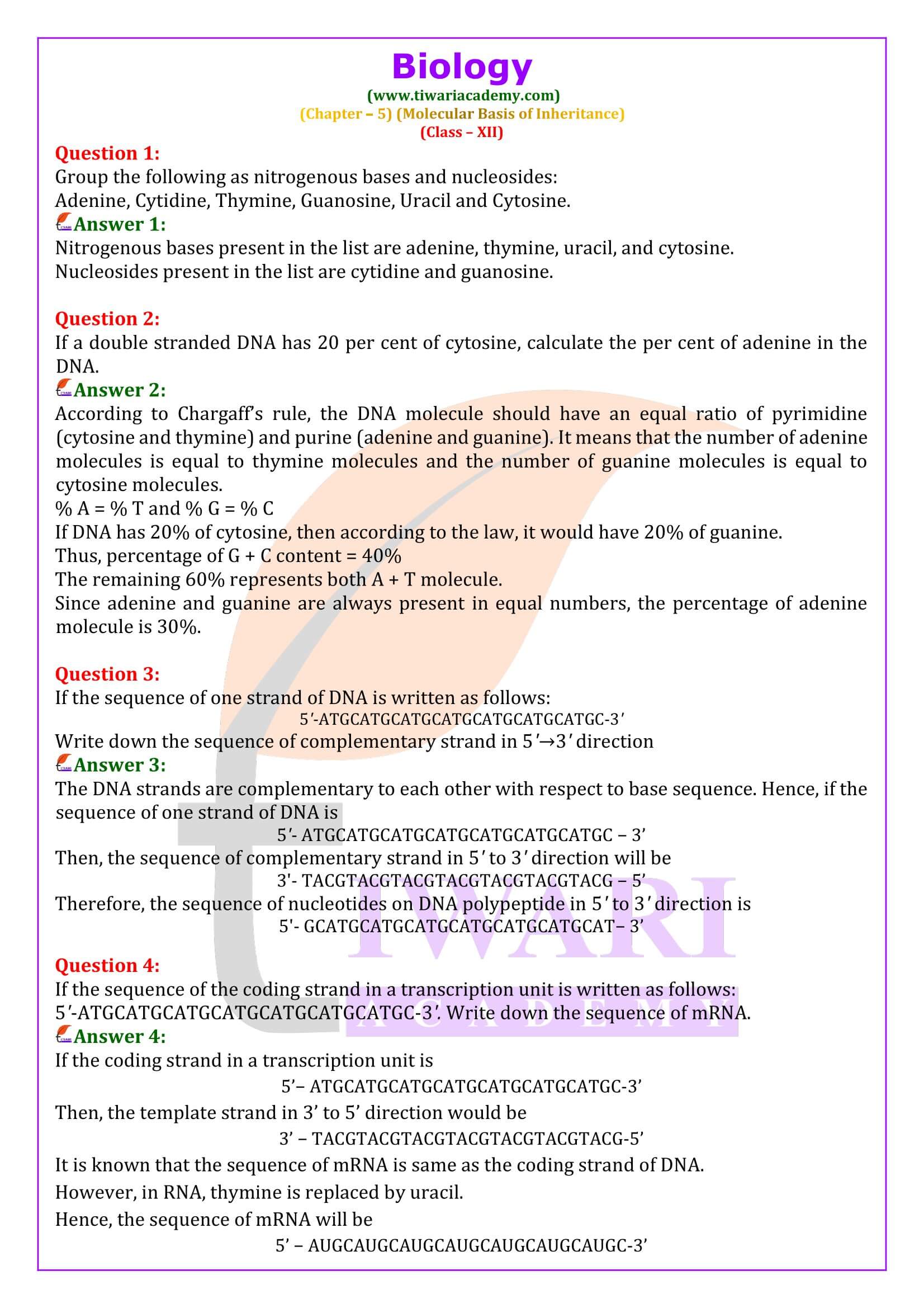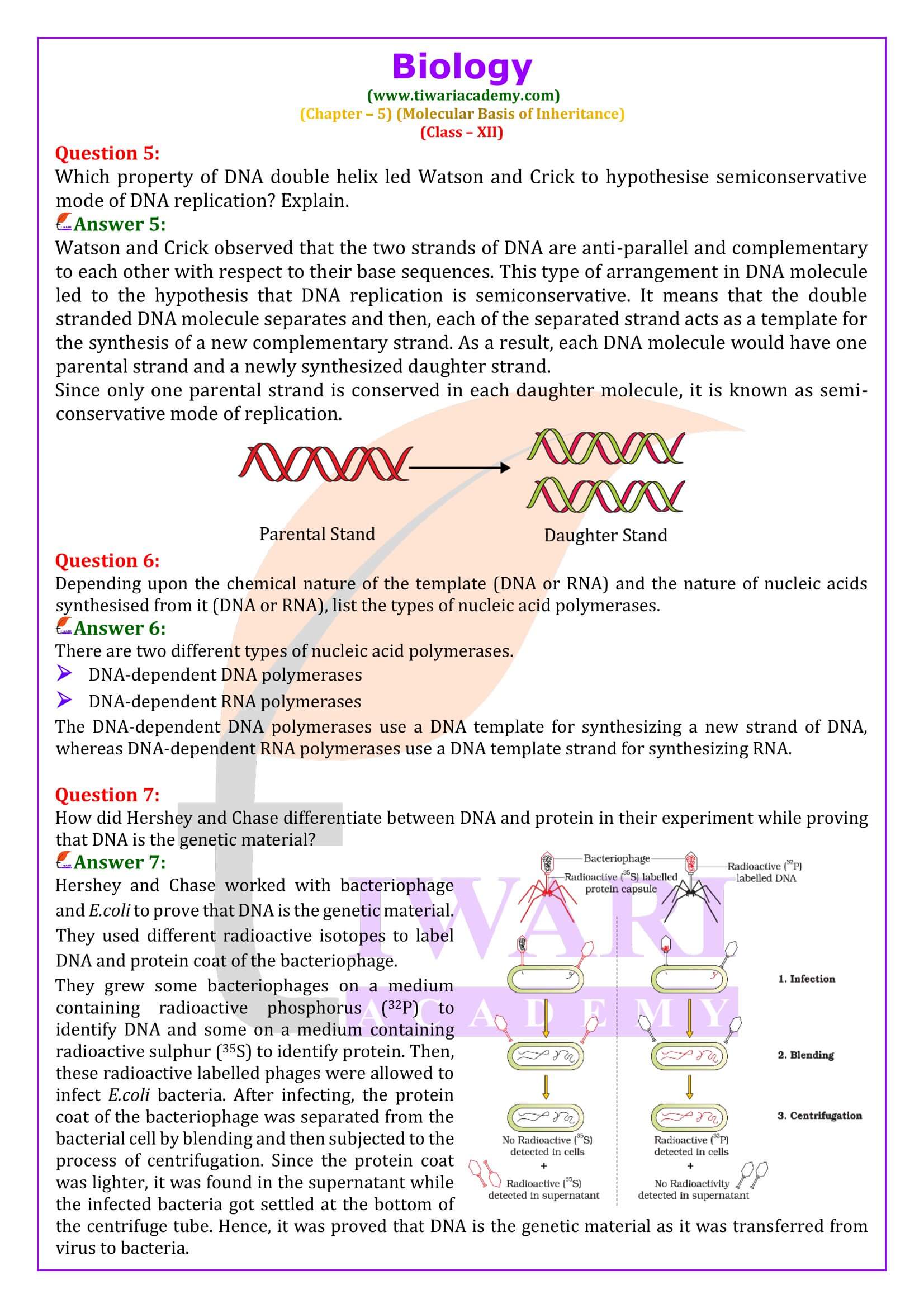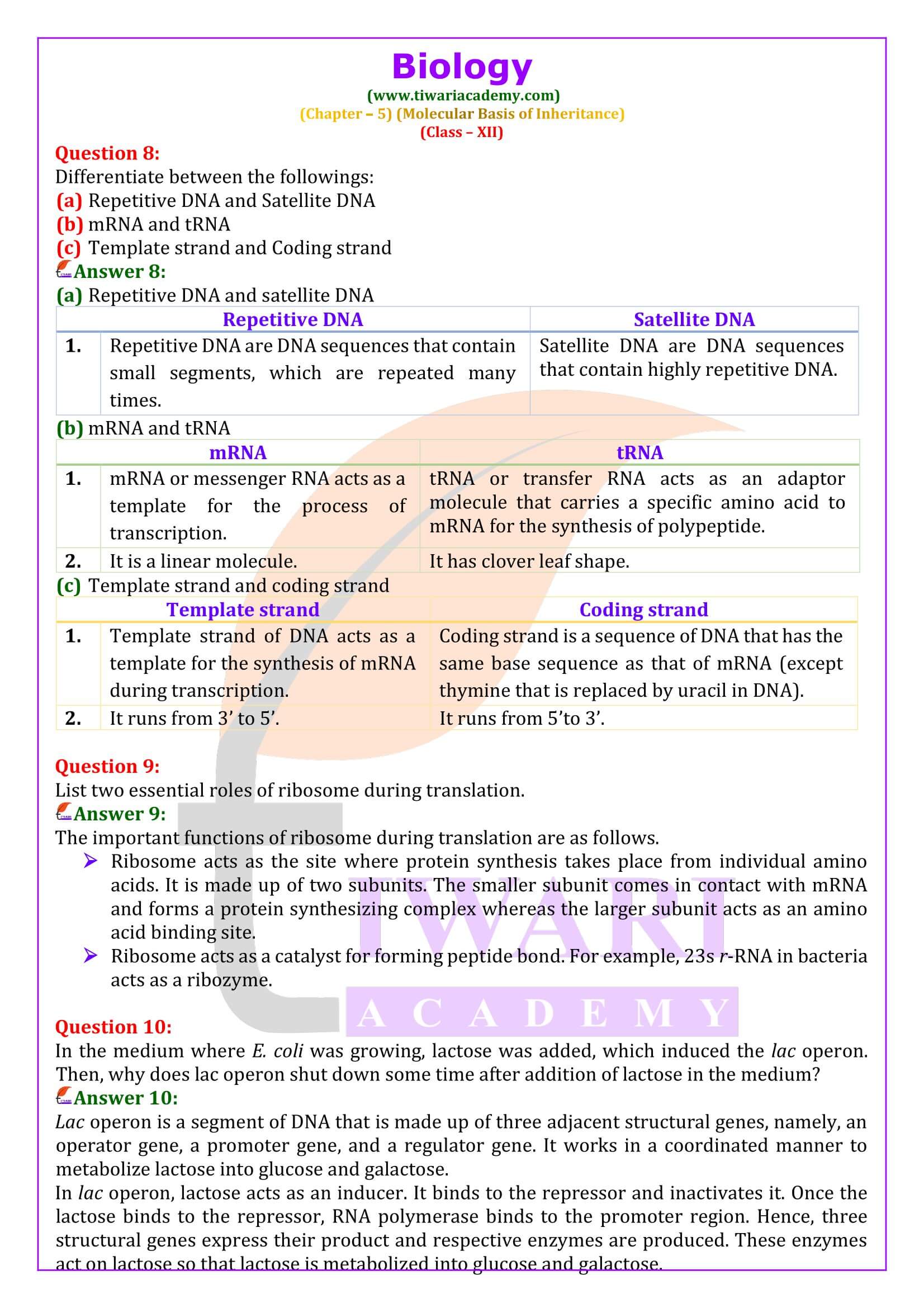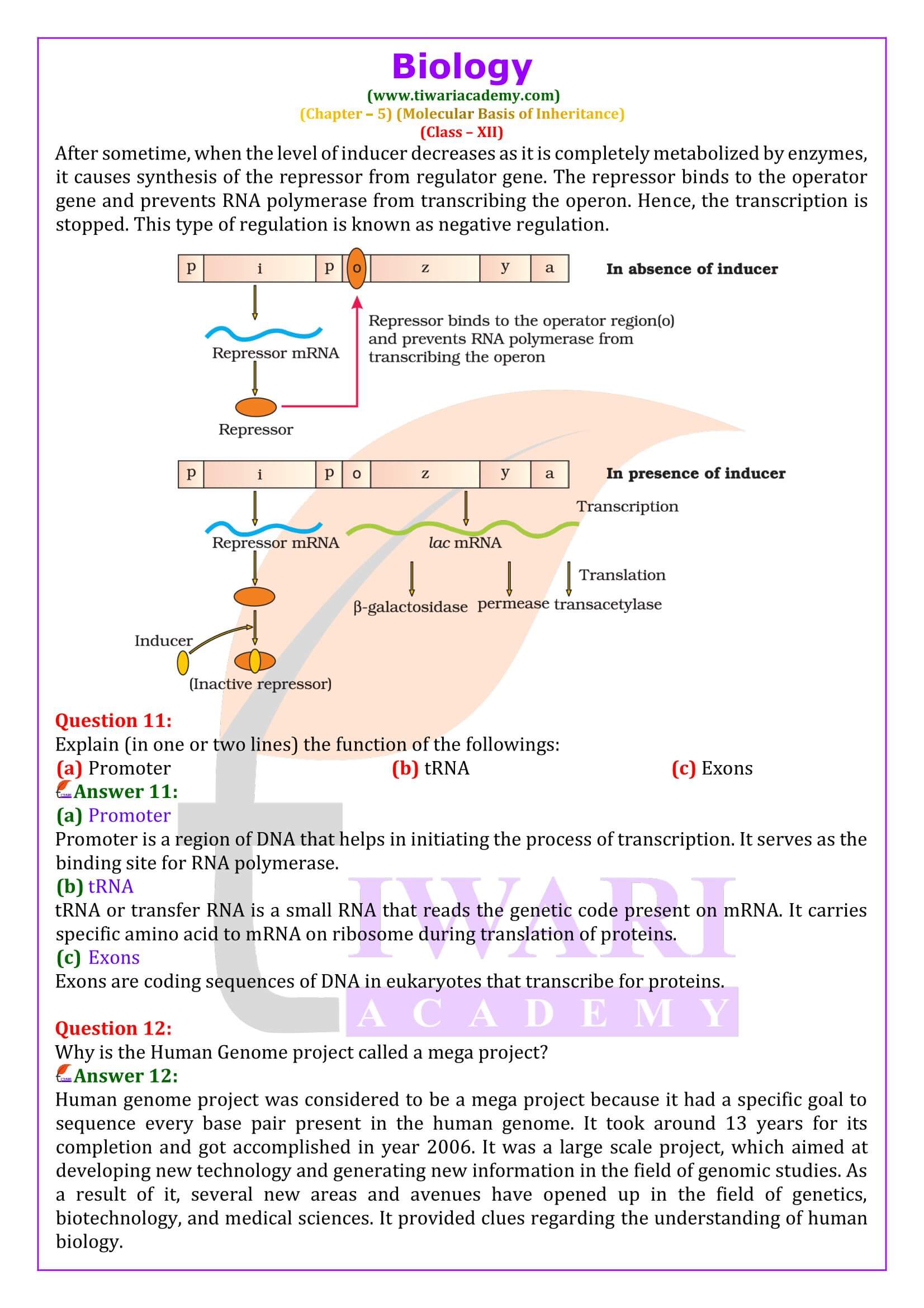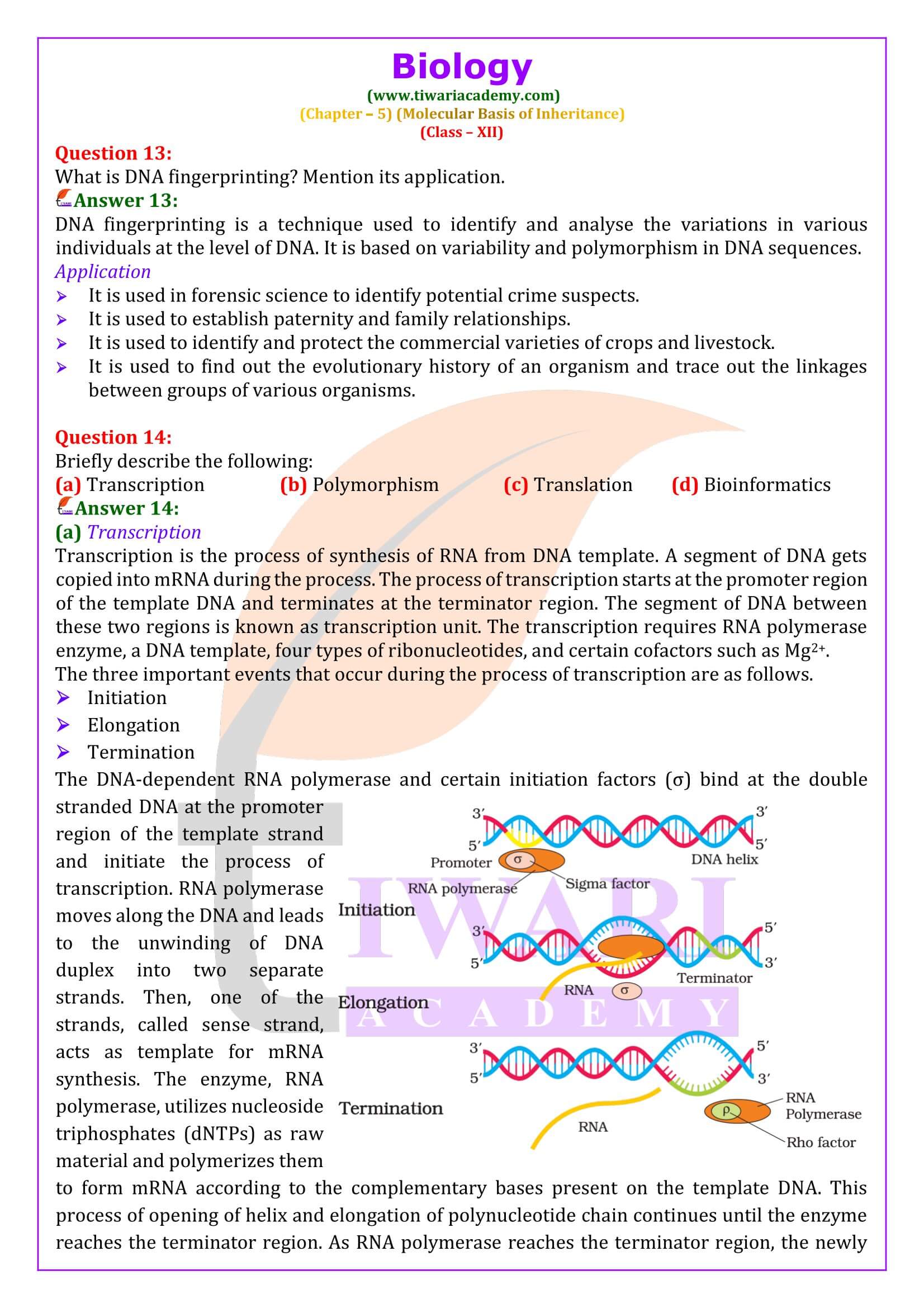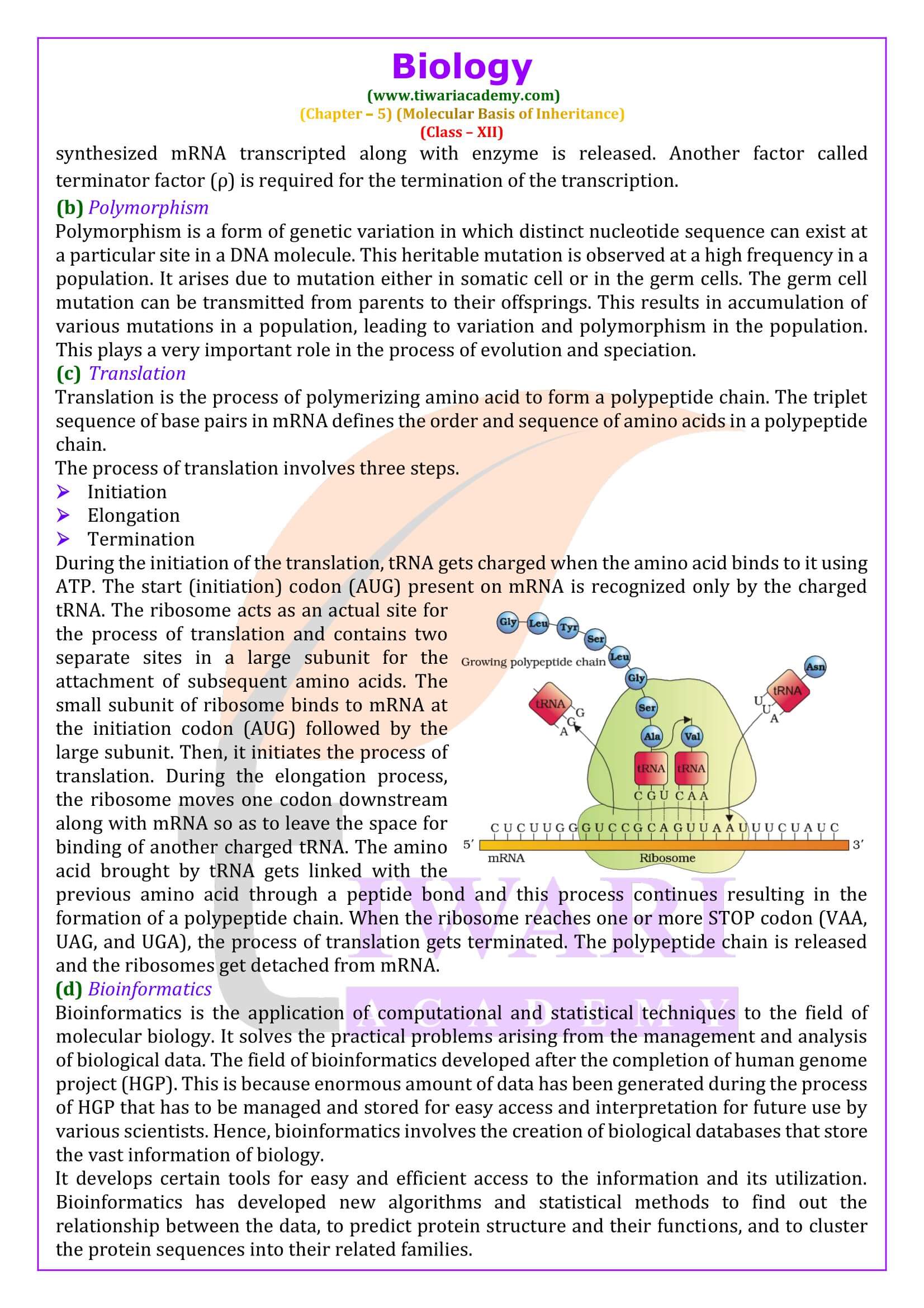NCERT Solutions for Class 12 Biology Chapter 5 Molecular Basis of Inheritance in Hindi and English Medium to download PDF file or Study Online without downloading updated for new academic year 2024-25 based on NCERT Books. NCERT Books for all subjects are given to download here. Discuss Your Questions Here and share your views with us through Discussion Forum.
NCERT Solutions for Class 12 Biology Chapter 5
Class 12 Biology Chapter 5 Molecular Basis of Inheritance Solutions
| Class: 12 | Science |
| Subject: | Biology |
| Chapter 5: | Molecular Basis of Inheritance |
| Mode of Content: | Text, Videos and Images |
| Academic Session: | 2024-25 |
| Medium used: | Hindi and English |
Class 12 Biology Chapter 5 Solutions in English
NCERT Solutions for Class 12 Biology Chapter 5 Molecular Basis of Inheritance in English Medium free to download in PDF format updated for new academic session 2024-25. Download CBSE NCERT Books for all boards who are following the latest CBSE Syllabus.
Important Terms related to Chapter 5
1. Genome: Sum total of genes in haploid set of chromosomes.
2. Satellite DNA: The repetitive DNA sequences which form a large portion of genome and have high degree of polymorphism but do not code for any proteins.
3. DNA Polymorphism: The variations at genetic level, where an inheritable mutation is observed, in a population at high frequency.
4. Operon: A group of genes which control a metabolic pathway.
5. Introns: The regions of a gene which are removed during the processing of mRNA.
6. Exons: The regions of a gene which become part of mRNA and code for different regions of proteins.
7. Euchromatin: The region of chromatin which is loosely packed and transcriptionally active, it stains lighter.
8. Heterochromatin: The chromatin that is more densely packed, stains dark and is transcriptionally inactive.
9. Bioinformatics: Science of use of techniques including statistics, storing as data bases, analysing, modelling and providing access to various aspects of biological information usually on the molecular level.
10. Splicing: The process in eukaryotic genes in which introns are removed and the exons are joined together to form mRNA.
Double-helix Structure of DNA
It is proposed by Watson and Crick in 1953.
(i) DNA is made up of two polynucleotide chains.
(ii) The backbone is made up of sugar and phosphate and the bases project inside.
(iii) Both polynucleotide chains are anti-parallel i.e. on chain has polarity 5`-3` and other chain has 3`-5`.
(iv) These two strands of chains are held together by hydrogen bonds.
(v) Both chains are coiled in right handed fashion. The pitch of helix is 3.4 nm with 10 base pairs in each turn.
Transforming Principle
Frederick Griffith (1928) performed experiments with Streptococcus phenumoniae and mice. This bacterium has two strains.
1. S-strain (Virulent)-which possess a mucilage coat and has ability to cause pneumonia.
2. R-strain (Nonvirulent) which do not possess mucilage coat and is unable to cause pneumonia.
Important Questions on 12th Biology Chapter 5
Group the following as nitrogenous bases and nucleosides: Adenine, Cytidine, Thymine, Guanosine, Uracil and Cytosine.
Nitrogenous bases present in the list are adenine, thymine, uracil, and cytosine. Nucleosides present in the list are cytidine and guanosine.
If the sequence of one strand of DNA is written as follows: 5′-ATGCATGCATGCATGCATGCATGCATGC-3′ Write down the sequence of complementary strand in 5’→3′ direction.
The DNA strands are complementary to each other with respect to base sequence. Hence, if the sequence of one strand of DNA is 5′- ATGCATGCATGCATGCATGCATGCATGC − 3’ Then, the sequence of complementary strand in 5′ to 3′ direction will be 3′- TACGTACGTACGTACGTACGTACGTACG − 5’ Therefore, the sequence of nucleotides on DNA polypeptide in 5′ to 3′ direction is 5′- GCATGCATGCATGCATGCATGCATGCAT− 3’
If a double stranded DNA has 20 per cent of cytosine, calculate the per cent of adenine in the DNA.
According to Chargaff’s rule, the DNA molecule should have an equal ratio of pyrimidine (cytosine and thymine) and purine (adenine and guanine). It means that the number of adenine molecules is equal to thymine molecules and the number of guanine molecules is equal to cytosine molecules. % A = % T and % G = % C If DNA has 20% of cytosine, then according to the law, it would have 20% of guanine. Thus, percentage of G + C content = 40% The remaining 60% represents both A + T molecule. Since adenine and guanine are always present in equal numbers, the percentage of adenine molecule is 30%.
Depending upon the chemical nature of the template (DNA or RNA) and the nature of nucleic acids synthesised from it (DNA or RNA), list the types of nucleic acid polymerases.
There are two different types of nucleic acid polymerases. DNA-dependent DNA polymerases DNA-dependent RNA polymerases The DNA-dependent DNA polymerases use a DNA template for synthesizing a new strand of DNA, whereas DNA-dependent RNA polymerases use a DNA template strand for synthesizing RNA.
List two essential roles of ribosome during translation.
The important functions of ribosome during translation are as follows. Ribosome acts as the site where protein synthesis takes place from individual amino acids. It is made up of two subunits. The smaller subunit comes in contact with mRNA and forms a protein synthesizing complex whereas the larger subunit acts as an amino acid binding site. Ribosome acts as a catalyst for forming peptide bond. For example, 23s r-RNA in bacteria acts as a ribozyme.
Why is the Human Genome project called a mega project?
Human genome project was considered to be a mega project because it had a specific goal to sequence every base pair present in the human genome. It took around 13 years for its completion and got accomplished in year 2006. It was a large scale project, which aimed at developing new technology and generating new information in the field of genomic studies. As a result of it, several new areas and avenues have opened up in the field of genetics, biotechnology, and medical sciences. It provided clues regarding the understanding of human biology.
What is DNA fingerprinting? Mention its application.
DNA fingerprinting is a technique used to identify and analyse the variations in various individuals at the level of DNA. It is based on variability and polymorphism in DNA sequences. Application It is used in forensic science to identify potential crime suspects. It is used to establish paternity and family relationships. It is used to identify and protect the commercial varieties of crops and livestock. It is used to find out the evolutionary history of an organism and trace out the linkages between groups of various organisms.
If the sequence of the coding strand in a transcription unit is written as follows: 5′-ATGCATGCATGCATGCATGCATGCATGC-3′. Write down the sequence of mRNA.
If the coding strand in a transcription unit is 5’− ATGCATGCATGCATGCATGCATGCATGC-3’ Then, the template strand in 3’ to 5’ direction would be 3’ − TACGTACGTACGTACGTACGTACGTACG-5’ It is known that the sequence of mRNA is same as the coding strand of DNA. However, in RNA, thymine is replaced by uracil. Hence, the sequence of mRNA will be 5’ − AUGCAUGCAUGCAUGCAUGCAUGCAUGC-3’
Download NCERT Books for class 12 Biology and Offline Apps 2024-25 based on new CBSE Syllabus. Ask your doubts related to NIOS or CBSE Board and share your knowledge with your friends and other users through Discussion Forum.
